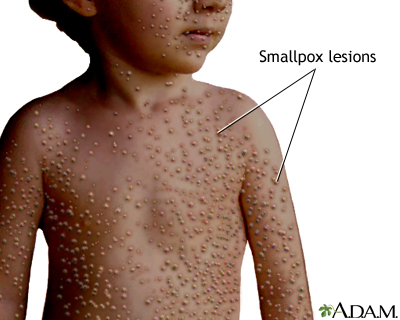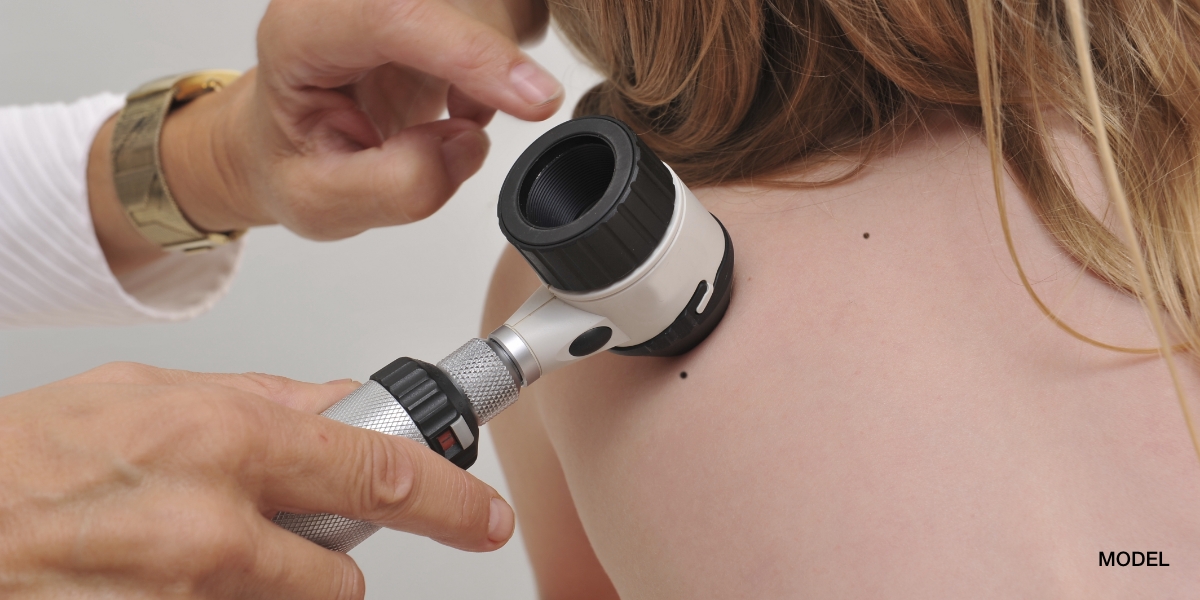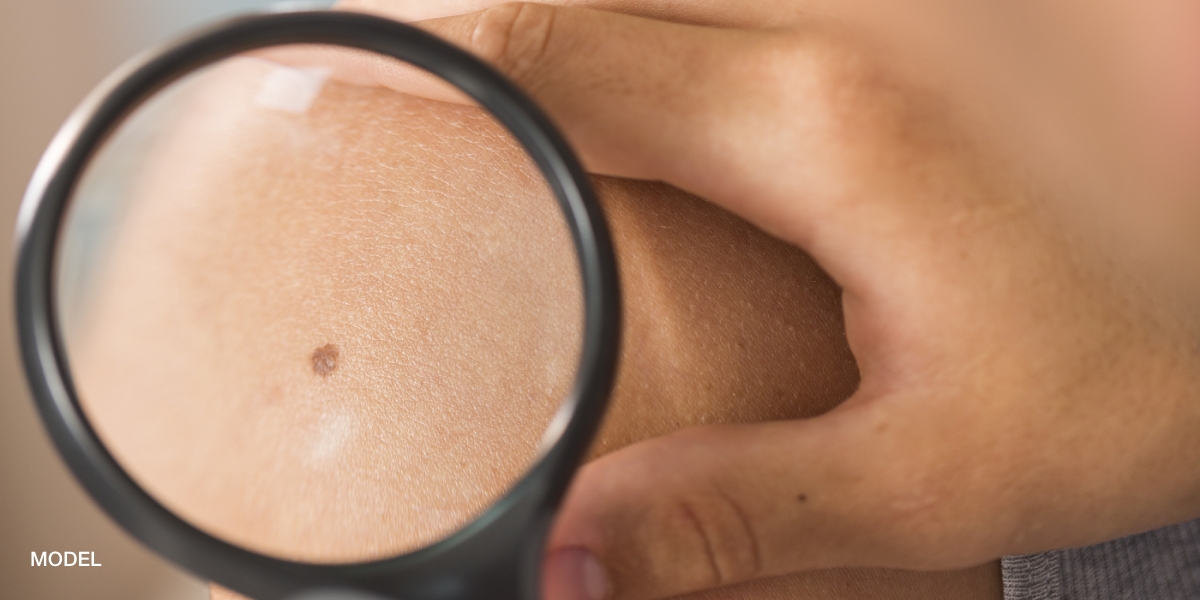Smallpox, also called Variola Major, is a DNA virus in the orthopoxvirus family which I have never encountered in my The Woodlands dermatology and Conroe dermatology clinics. It was eradicated as a disease in 1977 but has become of interest recently as a possible bioterrorism agent. Smallpox is transmitted via the respiratory route and has an incubation period of one to three weeks. Initially, patients present with a prodrome of fever, severe headache, and body aches. After the fever resolves, a rash occurs on the trunk, face, arms and legs with the palms and soles being the first areas affected. The lesions on the palms and soles appear like tender “BBs” under the skin. The other skin lesions begins as flat erythematous (red) macules that form papules over two to four days then become pustules/vesicles for two weeks before rupturing and forming crusts and permanent scars. Patients become infectious at the beginning of the rash and for the next ten days. Other complications can occur such as: pneumonia, encephalitis, arthritis, and osteitis (bone inflammation). The mortality rate of Smallpox can be as high as 40%, but immunity is lifelong. Diagnosis of smallpox is by viral culture or PCR. Treatment of Smallpox is isolation of the patient and Cidofovir antiviral medicine. A vaccination does exist for Smallpox (see blog entry Viruses – Vaccinia).





